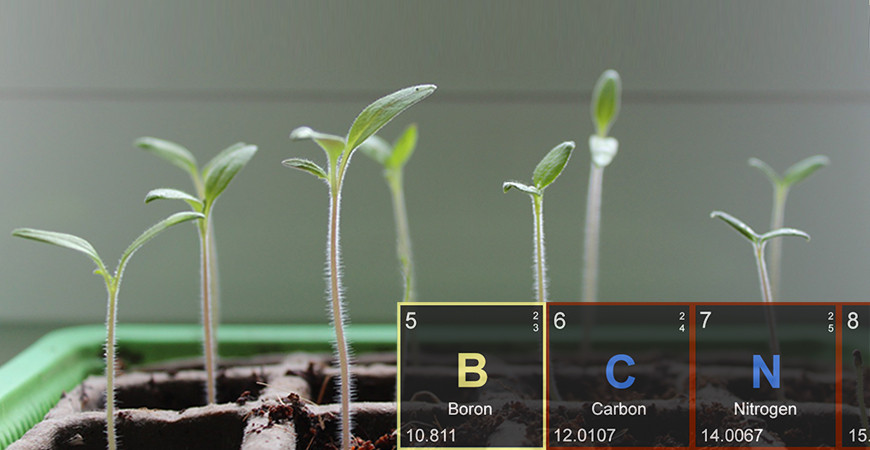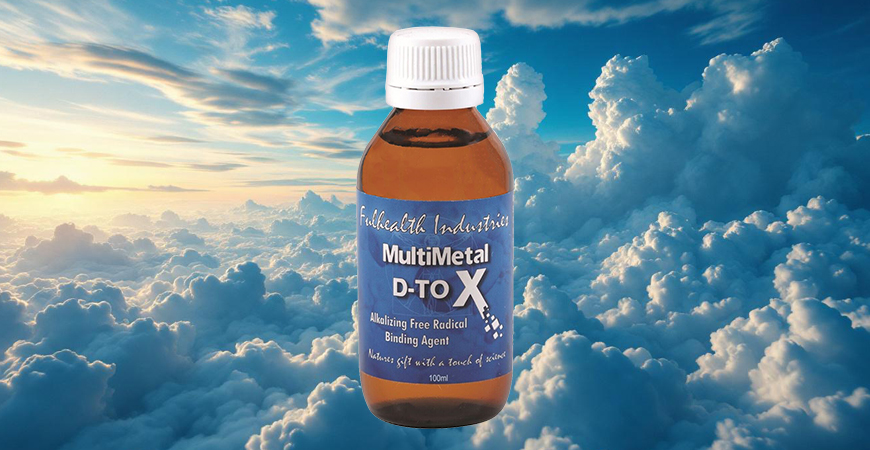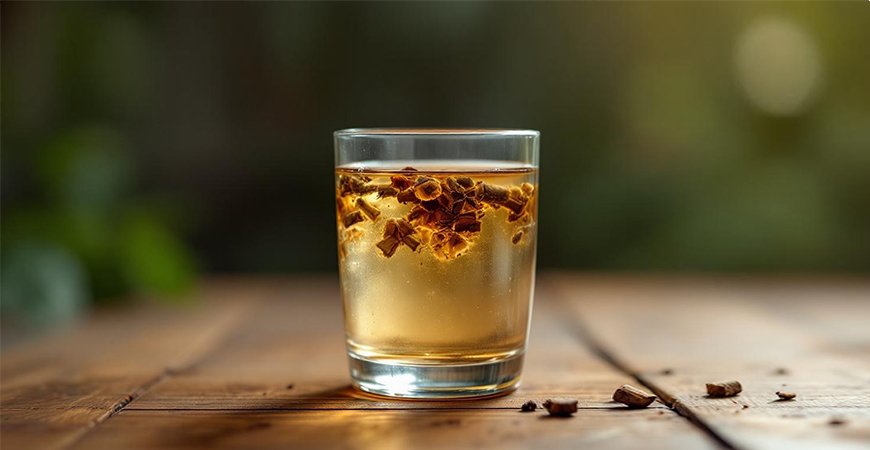Boron Published Studies
Boron is a mineral that should occur naturally in our soil. It is also a mineral that should be part of our daily diet because it is essential for plant health, animal health and likewise human health.
Boron is found primarily in the vegetable kingdom (plants), which draw boron directly up from the soil from which it grows and is then converted using sugars into a readily absorbed salt called borates.
Unfortunately, due to conventional agriculture, there is hardly any boron left in natural soil particularly here in Australia.
With the vast majority of Australian soils being deficient in boron and permanently cultivated, soils are not what they used to be.
Once boron was added by farmers, but unfortunately, this is no longer a common practice. With the use of growth accelerators, artificial fertilisers, pesticides and herbicides, such as, glyphosate becoming standard in conventional agriculture, the minerals required for good health are further compromised.
Substances like above work like a binder for the minerals, so the minerals are ultimately no longer available to the plants and subsequently missing from our diet.
Boron: An overlooked nutrient
Boron has been long proven to be one of the most important trace minerals, because it is essential for so many functions in the body, the following is just a few…
- Stem cell growth, signalling, and proliferation.
- The growth and maintenance of bone.
- Improved wound healing.
- Beneficially impacts the body’s use of estrogen, testosterone, calcium, and vitamin D.
- Boosts magnesium absorption.
- Reduces levels of inflammatory biomarkers, such as hs-CRP and TNF-α; raises levels of antioxidant enzymes, such as SOD, catalase, and glutathione peroxidise.
- Protects against pesticide-induced oxidative stress and heavy-metal toxicity.
- Improves brain electrical activity, cognitive performance, and short-term memory.
- Influences the formation and activity of key biomolecules, such as SAM-e and NAD+.
- Has demonstrated preventive and therapeutic effects in a number of cancers, such as prostate, cervical, and lung cancers and non-Hodgkin’s lymphoma.
The modern western diet is extremely lacking in boron.
Most research points to an intake of at least 3 – 10 mg/day if not at least 20mg/day to replenish our boron levels.
Unfortunately most modern diets are estimated to supply only 1 mg/day at best.
Boron is found naturally in plants and is best absorbed by our body in its natural form found in fruit called, “Fructo-borate”.
The Numerous Worldwide Scientific Studies of Boron
1. Nielsen FH, Hunt CD, Mullen LM, Hunt JR. Effect of dietary boron on mineral, estrogen, and testosterone metabolism in postmenopausal women. FASEB J. 1987;1(5):394-397. [PubMed] [Google Scholar]
2. Nielsen FH. Is boron nutritionally relevant? Nutr Rev. 2008;66(4):183-191. [PubMed] [Google Scholar]
3. Beattie JH, Peace HS. The influence of a low-boron diet and boron supplementation on bone, major mineral and sex steroid metabolism in postmenopausal women. Br J Nutr. 1993;69(3):871-884. [PubMed] [Google Scholar]
4. Hunt CD. The biochemical effects of physiologic amounts of dietary boron in animal nutrition models. Environ Health Perspect. 1994;102(suppl 7):35-43. [PMC free article] [PubMed] [Google Scholar]
5. Gorustovich AA, Steimetz T, Nielsen FH, Guglielmotti MB. A histomorphometric study of alveolar bone modelling and remodeling in mice fed a boron-deficient diet. Arch Oral Biol. 2008;53(7):677-682. [PubMed] [Google Scholar]
6. Nielsen FH, Stoecker BJ. Boron and fish oil have different beneficial effects on strength and trabecular microarchitecture of bone. J Trace Elem Med Biol. 2009;23(3):195-203. [PubMed] [Google Scholar]
7. Hakki SS, Bozkurt BS, Hakki EE. Boron regulates mineralized tissue-associated proteins in osteoblasts (MC3T3-E1). J Trace Elem Med Biol. 2010;24(4):243-250. [PubMed] [Google Scholar]
8. Blech MF, Martin C, Borrelly J, Hartemann P. Treatment of deep wounds with loss of tissue: value of a 3 percent boric acid solution [in French]. Presse Med. 1990;19(22):1050-1052. [PubMed] [Google Scholar]
9. Benderdour M, Van Bui T, Hess K, Dicko A, Belleville F, Dousset B. Effects of boron derivatives on extracellular matrix formation. J Trace Elem Med Biol. 2000;14(3):168-173. [PubMed] [Google Scholar]
10. Nzietchueng RM, Dousset B, Franck P, Benderdour M, Nabet P, Hess K. Mechanisms implicated in the effects of boron on wound healing. J Trace Elem Med Biol. 2002;16(4):239-244. [PubMed] [Google Scholar]
11. Ying X, Cheng S, Wang W, et al.. Effect of boron on osteogenic differentiation of human bone marrow stromal cells. Biol Trace Elem Res. 2011;144(1-3):306-315. [PubMed] [Google Scholar]
12. Rosen V, Wozney JM. Bone morphogenetic proteins. In: Bilezikian JP, Raisz LG, Rodan GA, eds. Principles of Bone Biology. Vol 2. 2nd ed. San Diego, CA: Academic Press; 2002:919-928. [Google Scholar]
13. Chen D, Zhao M, Mundy GR. Bone morphogenetic proteins. Growth Factors. 2004;22(4):233-241. [PubMed] [Google Scholar]
14. Lavery K, Swain P, Falb D, Alaoui-Ismaili MH. BMP-2/4 and BMP-6/7 differentially utilize cell surface receptors to induce osteoblastic differentiation of human bone marrow-derived mesenchymal stem cells. J Biol Chem. 2008;283(30):20948-20958. [PMC free article] [PubMed] [Google Scholar]
15. Martinovic S, Borovecki F, Miljavac V, et al.. Requirement of a bone morphogenetic protein for the maintenance and stimulation of osteoblast differentiation. Arch Histol Cytol. 2006;69(1):23-36. [PubMed] [Google Scholar]
16. Phimphilai M, Zhao Z, Boules H, Roca H, Franceschi RT. BMP signaling is required for RUNX2-dependent induction of the osteoblast phenotype. J Bone Miner Res. 2006;21(4):637-646. [PMC free article] [PubMed] [Google Scholar]
17. Franceschi RT, Ge C, Xiao G, Roca H, Jiang D. Transcriptional regulation of osteoblasts. Cells Tissues Organs. 2009;189(1-4):144-152. [PMC free article] [PubMed] [Google Scholar]
18. Ducy P, Starbuck M, Priemel M, et al.. A Cbfa1-dependent genetic pathway controls bone formation beyond embryonic development. Genes Dev. 1999;13(8):1025-1036. [PMC free article] [PubMed] [Google Scholar]
19. Gersbach CA, Byers BA, Pavlath GK, García AJ. Runx2/Cbfa1 stimulates transdifferentiation of primary skeletal myoblasts into a mineralizing osteoblastic phenotype. Exp Cell Res. 2004;300(2):406-417. [PubMed] [Google Scholar]
20. Naghii MR, Mofid M, Asgari AR, Hedayati M, Daneshpour MS. Comparative effects of daily and weekly boron supplementation on plasma steroid hormones and proinflammatory cytokines. J Trace Elem Med Biol. 2011;25(1):54-58. [PubMed] [Google Scholar]
21. Naghii MR, Samman S. The effect of boron supplementation on its urinary excretion and selected cardiovascular risk factors in healthy male subjects. Biol Trace Elem Res. 1997;56(3):273-286. [PubMed] [Google Scholar]
22. Morgentaler A. Testosterone for Life: Recharge Your Vitality, Sex Drive, Muscle Mass, and Overall Health. New York, NY: McGraw-Hill; 2009:65. [Google Scholar]
23. Chueh KS, Huang SP, Lee YC, et al.. The comparison of the aging male symptoms (AMS) scale and androgen deficiency in the aging male (ADAM) questionnaire to detect androgen deficiency in middle-aged men. J Androl. 2012;33(5):817-823. [PubMed] [Google Scholar]
24. Dupre JN, Keenan MJ, Hegsted M, Brudevold AM. Effects of dietary boron in rats fed a vitamin D-deficient diet. Environ Health Perspect. 1994;102(suppl 7):55-58. [PMC free article] [PubMed] [Google Scholar]
25. Nielsen FH, Mullen LM, Gallegher SK. Effect of boron depletion and repletion on blood indicators of calcium status in humans fed a magnesium-low diet. J Trace Elem Exp Med. 1990;3:45-54. [Google Scholar]
26. Miljkovic D, Scorei RI, Cimpoiaşu VM, Scorei ID. Calcium fructoborate: plant-based dietary boron for human nutrition. J Diet Suppl. 2009;6(3):211-226. [PubMed] [Google Scholar]
27. Miljkovic D, Miljkovic N, McCarty MF. Up-regulatory impact of boron on vitamin D function—does it reflect inhibition of 24-hydroxylase? Med Hypotheses. 2004;63(6):1054-1056. [PubMed] [Google Scholar]
28. Nuklear. Estradiol Synthesis. Licensed under CC BY-SA 4.0 via Wikimedia Commons, work by Lara Pizzorno, http://commons.wikimedia.org/wiki/File:Estradiol_synthesis.svg#mediaviewer/File:Estradiol_synthesis.svg. Accessed July 8, 2015.
29. Henry HL. The 25(OH)D(3)/1alpha,25(OH)(2)D(3)-24R-hydroxylase: a catabolic or biosynthetic enzyme? Steroids. 2001;66(3-5):391-398. [PubMed] [Google Scholar]
30. DeLuca HF. Is there more to learn about functional vitamin D metabolism [published online ahead of print September 4, 2014]? J Steroid Biochem Mol Biol. April 2015;148:3-6. [PubMed] [Google Scholar]
31. Stubbs JR, Zhang S, Friedman PA, Nolin TD. Decreased conversion of 25-hydroxyvitamin D3 to 24,25-dihydroxyvitamin D3 following cholecalciferol therapy in patients with CKD. Clin J Am Soc Nephrol. 2014;9(11):1965-1973. [PMC free article] [PubMed] [Google Scholar]
32. Zhou Y, Zhao LJ, Xu X, et al.. DNA methylation levels of CYP2R1 and CYP24A1 predict vitamin D response variation. J Steroid Biochem Mol Biol. 2014;144 Pt A:207-214. doi: 10.1016/j.jsbmb.2013.10.004. [PMC free article] [PubMed] [Google Scholar]
33. Silberberg MS. e-Study Guide for Chemistry: The Molecular Nature of Matter and Change. ISBN:9780077216504 (Google eBook). [Google Scholar]
34. Jones G, Prosser DE, Kaufmann M. 25-Hydroxyvitamin D-24-hydroxylase (CYP24A1): its important role in the degradation of vitamin D. Arch Biochem Biophys. 2012;523(1):9-18. [PubMed] [Google Scholar]
35. Zofková I, Nemcikova P, Matucha P. Trace elements and bone health. Clin Chem Lab Med. 2013;51(8):1555-1561. [PubMed] [Google Scholar]
36. Nielsen FH. The emergence of boron as nutritionally important throughout the life cycle. Nutrition. 2000;16(7-8):512-514. [PubMed] [Google Scholar]
37. Armstrong TA, Spears JW. Effect of boron supplementation of pig diets on the production of tumor necrosis factor-alpha and interferon-gamma. J Anim Sci. 2003;81(10):2552-2561. [PubMed] [Google Scholar]
38. Wang G, Li N, Chang S, et al.. A prospective follow-up study of the relationship between C-reactive protein and human cancer risk in the Chinese Kailuan female cohort [published online ahead of print December 9, 2014]. Cancer Epidemiol Biomarkers Prev. 2015;24(2):459-465. [PMC free article] [PubMed] [Google Scholar]
39. Chen F, Wang W, Teng Y, et al.. Relationship between high-sensitivity C-reactive protein and obesity/metabolic syndrome in children [in Chinese]. Zhonghua Liu Xing Bing Xue Za Zhi. 2014;35(6):621-625. [PubMed] [Google Scholar]
40. Kaur R, Matharoo K, Sharma R, Bhanwer AJ. C-reactive protein + 1059 G>C polymorphism in type 2 diabetes and coronary artery disease patients. Meta Gene. November 2013;1:82-92. [PMC free article] [PubMed] [Google Scholar]
41. Svensson E, Mor A, Rungby J, et al.. Lifestyle and clinical factors associated with elevated C-reactive protein among newly diagnosed type 2 diabetes mellitus patients: a cross-sectional study from the nationwide DD2 cohort. BMC Endocr Disord. August 2014;14:74. [PMC free article] [PubMed] [Google Scholar]
42. Hamirani YS, Katz R, Nasir K, et al.. Association between inflammatory markers and liver fat: the multi-ethnic study of atherosclerosis. J Clin Exp Cardiolog. 2014;5. [PMC free article] [PubMed] [Google Scholar]
43. Zhao X, Luo J, Li B, Liu S, Li D. The association between preoperative serum C-reactive protein and hepatocellular carcinoma recurrence in patients with chronic hepatitis B virus (HBV) infection—a retrospective study. PLoS One. 2015;10(1):e0116909. [PMC free article] [PubMed] [Google Scholar]
44. Rocha P, Morgan CJ, Templeton AJ, Pond GR, Naik G, Sonpavde G. Prognostic impact of C-reactive protein in metastatic prostate cancer: a systematic review and meta-analysis. Oncol Res Treat. 2014;37(12):772-776. [PubMed] [Google Scholar]
45. Jin Y, Sun Y, Shi X, Zhao J, Shi L, Yu X. Prognostic value of circulating C-reactive protein levels in patients with non-small cell lung cancer: a systematic review with meta-analysis. J Cancer Res Ther. 2014;10(suppl):C160-C166. [PubMed] [Google Scholar]
46. Au B, Smith KJ, Gariépy G, Schmitz N. C-reactive protein, depressive symptoms, and risk of diabetes: results from the English Longitudinal Study of Ageing (ELSA). J Psychosom Res. 2014;77(3):180-186. [PubMed] [Google Scholar]
47. Khandaker GM, Pearson RM, Zammit S, Lewis G, Jones PB. Association of serum interleukin 6 and C-reactive protein in childhood with depression and psychosis in young adult life: a population-based longitudinal study. JAMA Psychiatry. 2014;71(10):1121-1128. [PMC free article] [PubMed] [Google Scholar]
48. Kaptoge S, Di Angelantonio E, Lowe G, et al.Emerging Risk Factors Collaboration . C-reactive protein concentration and risk of coronary heart disease, stroke, and mortality: an individual participant meta-analysis. Lancet. 2010;375(9709):132-140. [PMC free article] [PubMed] [Google Scholar]
49. Danesh J, Kaptoge S, Mann AG, et al.. Long-term interleukin-6 levels and subsequent risk of coronary heart disease: two new prospective studies and a systematic review. PLoS Med. 2008;5(4):e78. [PMC free article] [PubMed] [Google Scholar]
50. Arkhipova SV, Zorin NA, Iankin Mlu, et al.. Cytokine and acute phase inflammation reactant levels in men with myocardial infarction [in Russian]. Klin Med (Mosk). 2009;87(12):20-23. [PubMed] [Google Scholar]
51. Gustafson B. Adipose tissue, inflammation and atherosclerosis. J Atheroscler Thromb. 2010;17(4):332-341. [PubMed] [Google Scholar]
52. Newnham RE. Essentiality of boron for healthy bones and joints. Environ Health Perspect. 1994;102(suppl 7):83-85. [PMC free article] [PubMed] [Google Scholar]
53. Newnham R. Discovering the cure for arthritis. Nutr Health. 2004;17(4):281-284. [PubMed] [Google Scholar]
54. Scorei R, Mitrut P, Petrisor I, Scorei I. A double-blind, placebo-controlled pilot study to evaluate the effect of calcium fructoborate on systemic inflammation and dyslipidemia markers for middle-aged people with primary osteoarthritis. Biol Trace Elem Res. 2011;144(1-3):253-263. [PMC free article] [PubMed] [Google Scholar]
55. Korkmaz M, Sayli U, Sayli BS, et al.. Estimation of human daily boron exposure in a boron-rich area. Br J Nutr. 2007;98(3):571-575. [PubMed] [Google Scholar]
56. Helliwell TR, Kelly SA, Walsh HP, et al.. Elemental analysis of femoral bone from patients with fractured neck of femur or osteoarthrosis. Bone. 1996;18(2):151-157. [PubMed] [Google Scholar]
57. Hunt CD, Idso JP. Dietary boron as a physiological regulator of the normal inflammatory response: a review and current research progress. J Trace Elem Exp Med. 1999;12(3):221-233. [Google Scholar]
58. Nielsen FH. Biochemical and physiologic consequences of boron deprivation in humans. Environ Health Perspect. 1994;102(suppl 7):59-63. [PMC free article] [PubMed] [Google Scholar]
59. Castiglioni S, Cazzaniga A, Albisetti W, Maier JA. Magnesium and osteoporosis: current state of knowledge and future research directions. Nutrients. 2013;5(8):3022-3033. [PMC free article] [PubMed] [Google Scholar]
60. García-Hernández A, Arzate H, Gil-Chavarría I, Rojo R, Moreno-Fierros L. High glucose concentrations alter the biomineralization process in human osteoblastic cells. Bone. 2012;50(1):276-288. [PubMed] [Google Scholar]
61. Travers RL, Rennie GC, Newnham RE. Boron and arthritis: the results of a double-blind pilot study. J Nutr Environ Med. 1990;1(2):127-132. [Google Scholar]
62. Scorei RI, Ciofrangeanu C, Ion R, et al.. In vitro effects of calcium fructoborate upon production of inflammatory mediators by LPS-stimulated RAW 264.7 macrophages. Biol Trace Elem Res. 2010;135(1-3):334-344. [PubMed] [Google Scholar]
63. Nakamura K, Saito T, Kobayashi R, et al.. C-reactive protein predicts incident fracture in community-dwelling elderly Japanese women: the Muramatsu study. Osteoporos Int. 2011;22(7):2145-2150. [PubMed] [Google Scholar]
64. Scorei RI, Rotaru P. Calcium fructoborate—potential anti-inflammatory agent. Biol Trace Elem Res. 2011;143(3):1223-1238. [PubMed] [Google Scholar]
65. Pietrzkowski Z, Phelan MJ, Keller R, Shu C, Argumedo R, Reyes-Izquierdo T. Short-term efficacy of calcium fructoborate on subjects with knee discomfort: a comparative, double-blind, placebo-controlled clinical study. Clin Interv Aging. June 2014;9:895-899. [PMC free article] [PubMed] [Google Scholar]
66. Wolfe F. The C-reactive protein but not erythrocyte sedimentation rate is associated with clinical severity in patients with osteoarthritis of the knee or hip. J Rheumatol. 1997;24(8):1486-1488. [PubMed] [Google Scholar]
67. Pearle AD, Scanzello CR, George S, et al.. Elevated high-sensitivity C-reactive protein levels are associated with local inflammatory findings in patients with osteoarthritis. Osteoarthritis Cartilage. 2007;15(5):516-523. [PubMed] [Google Scholar]
68. Scorei ID, Scorei RI. Calcium fructoborate helps control inflammation associated with diminished bone health. Biol Trace Elem Res. 2013;155(3):315-321. [PubMed] [Google Scholar]
69. Coban FK, Ince S, Kucukkurt I, Demirel HH, Hazman O. Boron attenuates malathion-induced oxidative stress and acetylcholinesterase inhibition in rats [published online ahead of print October 24, 2014]. Drug Chem Toxicol. [PubMed] [Google Scholar]
70. Penland JG. The importance of boron nutrition for brain and psychological function. Biol Trace Elem Res. 1998;66(1-3):299-317. [PubMed] [Google Scholar]
71. Turkez H, Geyikoglu F, Tatar A, Keles MS, Kaplan I. The effects of some boron compounds against heavy metal toxicity in human blood. Exp Toxicol Pathol. 2012;64(1-2):93-101. [PubMed] [Google Scholar]
72. Nielsen FH. Update on human health effects of boron. J Trace Elem Med Biol. 2014;28(4):383-387. [PubMed] [Google Scholar]
73. Bolaños L, Lukaszewski K, Bonilla I, Blevins D. Why boron? Plant Physiol Biochem. 2004;42(11):907-912. [PubMed] [Google Scholar]
74. Loenen WA. S-adenosylmethionine: jack of all trades and master of everything? Biochem Soc Trans. April 2006;34(pt 2):330-333. [PubMed] [Google Scholar]
75. Nielsen FH. Boron deprivation decreases liver S-adenosylmethionine and spermidine and increases plasma homocysteine and cysteine in rats. J Trace Elem Med Biol. 2009;23(3):204-213. [PubMed] [Google Scholar]
76. Ralston NV, Hunt CD. Diadenosine phosphates and S-adenosylmethionine: novel boron binding biomolecules detected by capillary electrophoresis. Biochim Biophys Acta. 2001;1527(1-2):20-30. [PubMed] [Google Scholar]
77. Mouchiroud L, Houtkooper RH, Auwerx J. NAD+ metabolism: a therapeutic target for age-related metabolic disease. Crit Rev Biochem Mol Biol. 2013;48(4):397-408. [PMC free article] [PubMed] [Google Scholar]
78. Wimmer MA, Lochnit G, Bassil E, Mühling KH, Goldbach HE. Membrane-associated, boron-interacting proteins isolated by boronate affinity chromatography. Plant Cell Physiol. 2009;50(7):1292-1304. [PubMed] [Google Scholar]
79. Grabon A, Khan D, Bankaitis VA. Phosphatidylinositol transfer proteins and instructive regulation of lipid kinase biology [published online ahead of print January 12, 2015]. Biochim Biophys Acta. doi:10.1016/j.bbalip.2014.12.011. [PMC free article] [PubMed] [Google Scholar]
80. Schroeder TM, Westendorf JJ. Histone deacetylase inhibitors promote osteoblast maturation. J Bone Miner Res. 2005;20(12):2254-2263. [PubMed] [Google Scholar]
81. Scorei RI, Popa R, Jr. Boron-containing compounds as preventive and chemotherapeutic agents for cancer. Anticancer Agents Med Chem. 2010;10(4):346-351. [PubMed] [Google Scholar]
82. Cui Y, Winton MI, Zhang ZF, et al.. Dietary boron intake and prostate cancer risk. Oncol Rep. 2004;11(4):887-892. [PubMed] [Google Scholar]
83. Barranco WT, Hudak PF, Eckhert CD. Evaluation of ecological and in vitro effects of boron on prostate cancer risk (United States). Cancer Causes Control. 2007;18(1):71-77. [PubMed] [Google Scholar]
84. Gonzalez A, Peters U, Lampe JW, White E. Boron intake and prostate cancer risk. Cancer Causes Control. 2007;18(10):1131-1140. [PubMed] [Google Scholar]
85. Gallardo-Williams MT, Maronpot RR, Wine RN, Brunssen SH, Chapin RE. Inhibition of the enzymatic activity of prostate-specific antigen by boric acid and 3-nitrophenyl boronic acid. Prostate. 2003;54(1):44-49. [PubMed] [Google Scholar]
86. Barranco WT, Eckhert CD. Boric acid inhibits human prostate cancer cell proliferation. Cancer Lett. 2004;216(1):21-29. [PubMed] [Google Scholar]
87. Gallardo-Williams MT, Chapin RE, King PE, et al.. Boron supplementation inhibits the growth and local expression of IGF-1 in human prostate adenocarcinoma (LNCaP) tumors in nude mice. Toxicol Pathol. 2004;32(1):73-78. [PubMed] [Google Scholar]
88. Balk SP, Ko YJ, Bubley GJ. Biology of prostate-specific antigen. J Clin Oncol. 2003;21(2):383-391. [PubMed] [Google Scholar]
89. Smoum R, Rubinstein A, Dembitsky VM, Srebnik M. Boron containing compounds as protease inhibitors. Chem Rev. 2012;112(7):4156-4220. [PubMed] [Google Scholar]
90. Diederich WE, Wegscheid-Gerlach C. The medicinal chemistry of protease inhibitors. Curr Top Med Chem. 2010;10(3):231. [PubMed] [Google Scholar]
91. Artibani W. Landmarks in prostate cancer diagnosis: the biomarkers. BJU Int. 2012;110(suppl 1):8-13. [PubMed] [Google Scholar]
92. Arnaldez F, Helman LJ. Targeting the insulin growth factor receptor 1. Hematol Oncol Clin North Am. 2012;26(3):527-542. [PMC free article] [PubMed] [Google Scholar]
93. Barranco WT, Eckhert CD. Cellular changes in boric acid-treated DU-145 prostate cancer cells. Br J Cancer. 2006;94(6):884-890. [PMC free article] [PubMed] [Google Scholar]
94. Barranco WT, Kim DH, Stella SL, Jr, Eckhert CD. Boric acid inhibits stored Ca2+ release in DU-145 prostate cancer cells. Cell Biol Toxicol. 2009;25(4):309-320. [PubMed] [Google Scholar]
95. Black A, Pinsky PF, Grubb RL, III, et al.. Sex steroid hormone metabolism in relation to risk of aggressive prostate cancer. Cancer Epidemiol Biomarkers Prev. 2014;23(11):2374-2382. [PMC free article] [PubMed] [Google Scholar]
96. Carruba G. Estrogen and prostate cancer: an eclipsed truth in an androgendominated scenario. J Cell Biochem. 2007;102(4):899-911. [PubMed] [Google Scholar]
97. Gann PH, Hennekens CH, Ma J, Longcope C, Stampfer MJ. Prospective study of sex hormone levels and risk of prostate cancer. J Natl Cancer Inst. 1996;88(16):1118-1126. [PubMed] [Google Scholar]
98. Ellem SJ, Risbridger GP. Aromatase and regulating the estrogen:androgen ratio in the prostate gland. J Steroid Biochem Mol Biol. 2010;118(4-5):246-251. [PubMed] [Google Scholar]
99. Hirata M, Inada M, Matsumoto C, et al.. A novel carborane analog, BE360, with a carbon-containing polyhedral boron-cluster is a new selective estrogen receptor modulator for bone. Biochem Biophys Res Commun. 2009;380(2):218-222. [PubMed] [Google Scholar]
100. Ohta K, Ogawa T, Kaise A, Endo Y. Enhanced estrogen receptor beta (ERβ) selectivity of fluorinated carborane-containing ER modulators. Bioorg Med Chem Lett. 2013;23(24):6555-6558. [PubMed] [Google Scholar]
101. Turkish Cervical Cancer and Cervical Cytology Research Group. Prevalence of cervical cytological abnormalities in Turkey. Int J Gynaecol Obstet. 2009;106(3):206-209. [PubMed] [Google Scholar]
102. Simsek A, Velioglu YS, Coskun AL, Sayli BS. Boron concentrations in selected foods from borate-producing regions in Turkey. J Sci Food Agric. 2003;83(6):586-592. [Google Scholar]
103. Drubin DA, McLaughlin-Drubin ME, Clawson GA, Meyers C. A protease inhibitor specifically inhibits growth of HPV-infected keratinocytes. Mol Ther. 2006;13(6):1142-1148. [PubMed] [Google Scholar]
104. Stöppler H, Stöppler MC, Adduci A, Koval D, Schlegel R. The serine protease inhibitors TLCK and TPCK react with the RB-binding core of HPV-18 E7 protein and abolish its RB-binding capability. Virology. 1996;217(2):542-553. [PubMed] [Google Scholar]
105. Stöppler H, Koval D, Schlegel R. The serine protease inhibitors TLCK and TPCK inhibit the in vitro immortalization of primary human keratinocytes by HPV-18 DNA. Oncogene. 1996;13(7):1545-1548. [PubMed] [Google Scholar]
106. Wise-Draper TM, Wells SI. Papillomavirus E6 and E7 proteins and their cellular targets. Front Biosci. January 2008;13:1003-1017. [PubMed] [Google Scholar]
107. Korkmaz M, Uzgören E, Bakirdere S, Aydin F, Ataman OY. Effects of dietary boron on cervical cytopathology and on micronucleus frequency in exfoliated buccal cells. Environ Toxicol. 2007;22(1):17-25. [PubMed] [Google Scholar]
108. Pesatori AC, Carugno M, Consonni D, et al.. Hormone use and risk for lung cancer: a pooled analysis from the International Lung Cancer Consortium (ILCCO). Br J Cancer. 2013;109(7):1954-1964. [PMC free article] [PubMed] [Google Scholar]
109. Yao Y, Gu X, Zhu J, Yuan D, Song Y. Hormone replacement therapy in females can decrease the risk of lung cancer: a meta-analysis. PLoS One. 2013;8(8):e71236. [PMC free article] [PubMed] [Google Scholar]
110. Mahabir S, Spitz MR, Barrera SL, Dong YQ, Eastham C, Forman MR. Dietary boron and hormone replacement therapy as risk factors for lung cancer in women. Am J Epidemiol. 2008;167(9):1070-1080. [PMC free article] [PubMed] [Google Scholar]
111. Shimizu K, Maruyama M, Yasui Y, Minegishi H, Ban HS, Nakamura H. Boron-containing phenoxyacetanilide derivatives as hypoxia-inducible factor (HIF)-1alpha inhibitors. Bioorg Med Chem Lett. 2010;20(4):1453-1456. [PubMed] [Google Scholar]
112. Scorei RI, Popa R. Sugar-borate esters—potential chemical agents in prostate cancer chemoprevention. Anticancer Agents Med Chem. 2013;13(6):901-909. [PubMed] [Google Scholar]
113. Genadieva-Stavric S, Cavallo F, Palumbo A. New approaches to management of multiple myeloma. Curr Treat Options Oncol. 2014;15(2):157-170. [PubMed] [Google Scholar]
114. Das BC, Thapa P, Karki R, et al.. Boron chemicals in diagnosis and therapeutics. Future Med Chem. 2013;5(6):653-676. [PMC free article] [PubMed] [Google Scholar]
115. Javeed A, Ashraf M, Riaz A, Ghafoor A, Afzal S, Mukhtar MM. Paclitaxel and immune system. Eur J Pharm Sci. 2009;38(4):283-290. [PubMed] [Google Scholar]
116. Turkez H, Tatar A, Hacimuftuoglu A, Ozdemir E. Boric acid as a protector against paclitaxel genotoxicity. Acta Biochim Pol. 2010;57(1):95-97. [PubMed] [Google Scholar]
117. Scorei R. Is boron a prebiotic element? A mini-review of the essentiality of boron for the appearance of life on earth. Orig Life Evol Biosph. 2012;42(1):3-17. [PubMed] [Google Scholar]
118. Larralde R, Robertson MP, Miller SL. Rates of decomposition of ribose and other sugars: implications for chemical evolution. Proc Natl Acad Sci U S A. 1995;92(18):8158-8160. [PMC free article] [PubMed] [Google Scholar]
119. Banfalvi G. Why ribose was selected as the sugar component of nucleic acids. DNA Cell Biol. 2006;25(3):189-196. [PubMed] [Google Scholar]
120. Furukawa Y, Horiuchi M, Kakegawa T. Selective stabilization of ribose by borate. Orig Life Evol Biosph. 2013;43(4-5):353-361. [PubMed] [Google Scholar]
121. Naghii MR, Wall PM, Samman S. The boron content of selected foods and the estimation of its daily intake among free-living subjects. J Am Coll Nutr. 1996;15(6):614-619. [PubMed] [Google Scholar]
122. Meacham S, Karakas S, Wallace A, Altun F. Boron in human health: evidence for dietary recommendations and public policies. Open Miner Process J. 2010;3(1):36-53. [Google Scholar]
123. Naghii MR, Samman S. The effect of boron on plasma testosterone and plasma lipids in rats. Nutr Res. 1997;17(3):523-531. [Google Scholar]
124. Nielsen FH. Boron—an overlooked element of potential nutritional importance. Nutr Today. 1988;23(1):4-7. [Google Scholar]
125. Rainey C, Nyquist L. Multicountry estimation of dietary boron intake. Biol Trace Elem Res. 1998;66(1-3):79-86. [PubMed] [Google Scholar]
126. Kim MH, Bae YJ, Lee YS, Choi MK. Estimation of boron intake and its relation with bone mineral density in free-living Korean female subjects. Biol Trace Elem Res. 2008;125(3):213-222. [PubMed] [Google Scholar]



